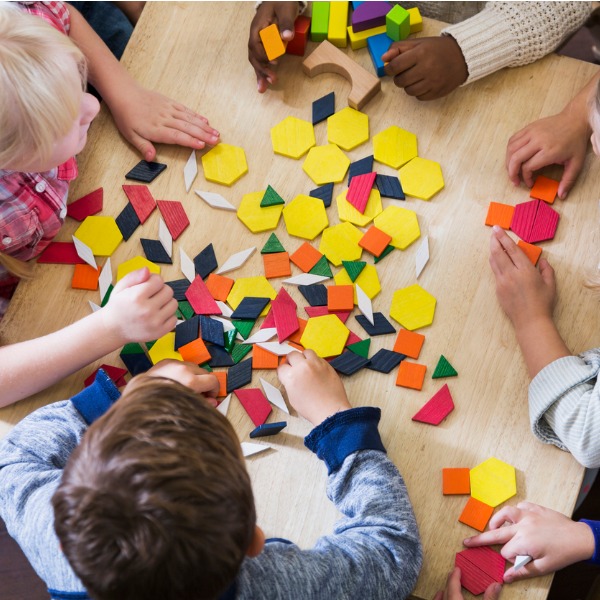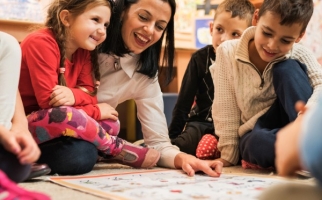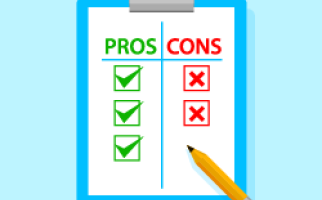Comparing & Contrasting

Children exploring pattern blocks (kali9, iStockphoto)
Comparing and contrasting are ways of looking at things to determine how they are alike and how they are different.
Definition
Comparing and contrasting are ways of looking at things to determine how they are alike and how they are different. Comparing involves identifying similarities and/or differences (e.g., apples and oranges are both fruit) whereas contrasting involves comparing two or more objects or events in order to show their differences (e.g., an apple has a thin skin that we can eat; an orange has a thick skin that we cannot eat).
Comparing & Contrasting are important because they…
- lead to the ability to sort and classify
- help students to think about and focus on important details
- clarify the differences between related objects/events/concepts
- promote the development of organizational skills (by providing a structure for organizing thoughts and ideas)
- support habits of mind such as flexible thinking, metacognition, using prior knowledge in new/different contexts, clear and accurate communication (e.g., providing explanations)
- support the ability to evaluate (e.g., why one solution is better than another)
Developing the Skill of Comparing & Contrasting
Students |
Educators |
|---|---|
|
Recognize that they compare and contrast objects and events in their day-to-day interactions and activities (e.g., “These are all things that floated and these are all things that sank.” “My tower is taller than your tower.” “This is a better solution. The others would all work but we have all the materials we need to do this one.”) |
Notice and name when students compare and/or contrast. Provide opportunities in multiple contexts for students to compare and contrast a variety of objects, places, events, sources of information, behaviours, etc. Name and notice the connection between comparing/contrasting and other skills students use daily, such as observing, classifying, graphing, identifying patterns, and evaluating. |
|
Use the language of comparing and contrasting (e.g., “These toys are alike because they all have wheels.” “The car is different from the boat because it does not have wheels.”) |
Model the use of comparative thinking and language (e.g., using words such as: compare, contrast, too, also, both, alike, the same, different, instead, unlike, etc.). Notice and name when students use comparative language and the contexts in which they use this language, including the terms (e.g., “I see you have compared the toys and found all of the ones with wheels.” |
|
Use the concept of comparing and contrasting to organize and present data from their inquiries, when appropriate |
Model the use of visual organizers (e.g., Venn diagrams, compare and contrast charts, sorting mats) when comparing and contrasting data. |
|
Draw conclusions about their comparisons (e.g., “I compared the information from this website to the information in the book from the library. The website information is more current.”; “It took longer for the ice to melt in that container than it did in this one. So that container is better for keeping your drink cold than this one.”) |
Provide time for and encouragement to students to make conclusions from their comparisons. |
Related Skills
Related Learning Strategies

